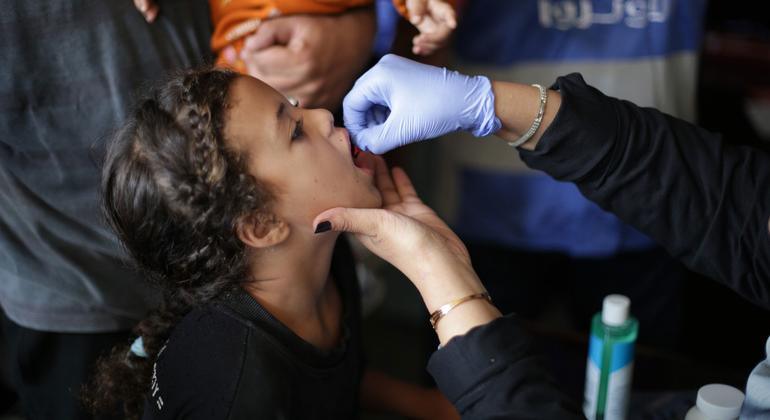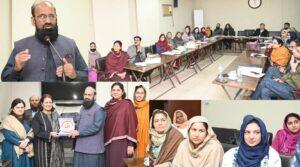Richard Peeperkorn, of the World Health Organization (WHO) in the Occupied Palestinian Territory, said the goal was to reach all children in the north with the second and final dose.
“We covered many more children than we expected, but we missed some,” he said during a video briefing for journalists at UN Headquarters on Monday, emphasizing that evacuation orders had recently displaced thousands of people.
However, the year-long war, combined with weeks of siege and Israel’s constant movement and bombing orders, has presented serious delays and obstacles.
Almost 80 percent covered
Still, the U.N. agency for Palestinian refugees, UNRWA, said 79 percent of children in the northern Gaza Strip are now fully vaccinated. against polio.
“Humanitarian pauses are essential to the deployment of this vital campaign, but without a lasting #CeaseFireNow, children will continue to suffer and die,” UNRWA saying on social media early Monday morning.
Senior UN officials were alarmed by violent incidents reported at some of the sites where parents, their children and aid workers gathered for the campaign launch.
WHO chief Tedros Adhanom Ghebreyesus expressed great concern over the weekend about reports of attacks on a health center.
UNICEF calls on Israel to investigate
The head of the United Nations Children’s Fund (UNICEF), Catherine Russell, in a statement issued on Saturday evening, stressed that attacks on civilians, including humanitarian workers and what remains of facilities and infrastructure, must stop. Gaza civilians.
“Together with the terrible level of child deaths in northern Gaza from other attacks, these latest events combine to write another dark chapter in one of the darkest periods of this terrible war,” he said.
“The entire Palestinian population in northern Gaza, especially children, is at imminent risk of dying from disease, hunger and continued shelling,” he warned, adding that UNICEF is calling on Israel to immediately investigate the circumstances. that surrounded an attack on their staff. member and that measures must be taken to hold those responsible accountable.
Deliver in the midst of conflict
The incidents occurred during agreed humanitarian breaks, running from 6am to 4pm during the three-day campaign. Eradicated in Gaza 25 years ago, polio reappeared earlier this year amid the multiple humanitarian crises triggered by the war, which began after the deadly Hamas-led attacks against Israel in October 2023.
To date, Israel’s war on Gaza has killed more than 43,000 people, according to Gaza’s Health Ministry, and destroyed vast areas of the Strip, including water supply stations and health centers.
Despite access problems, the Polio Technical Committee for Gaza, which includes the Palestinian Ministry of Health, WHO, UNICEF, UNRWA and its partners, decided to resume the campaign, which had been postponed from October 23 due to to the lack of security guarantees.
Early Saturday morning, 216 teams were deployed to 106 fixed sites, 22 of which had been added to ensure greater vaccination availability in areas where recently displaced people are seeking shelter, according to U.N. agencies.
Additionally, more than 200 social “mobilizers” engaged communities and raised awareness about vaccination efforts.
Mission almost accomplished
The campaign in northern Gaza follows the successful implementation of the first two phases of the second round in central and southern Gaza, which reached 451,216 children, or a total of 96 percent of the target in these areas.
To stop the easily spread poliovirus, at least 90 percent of all children in every community and neighborhood must be vaccinated, according to the WHO.
A delay in administering a second dose of nOPV2 within six weeks reduces the impact of two widely spaced rounds, decreasing immunity, according to the UN health agency.
The WHO also warned that the failure of a significant number of children to receive their second vaccine dose seriously jeopardizes efforts to stop the spread of the virus and could also lead to more cases in the Gaza Strip and neighboring countries.




